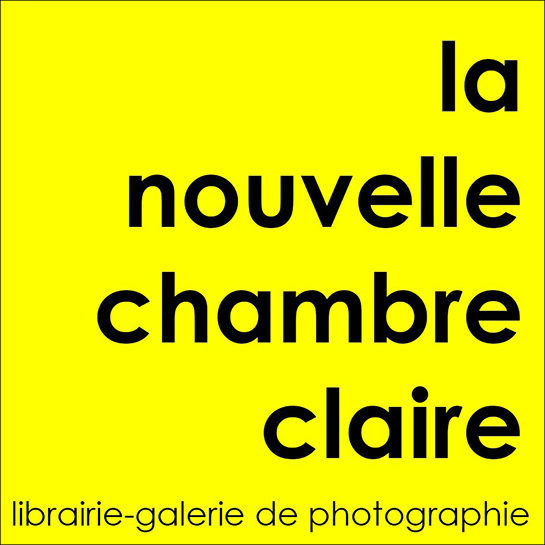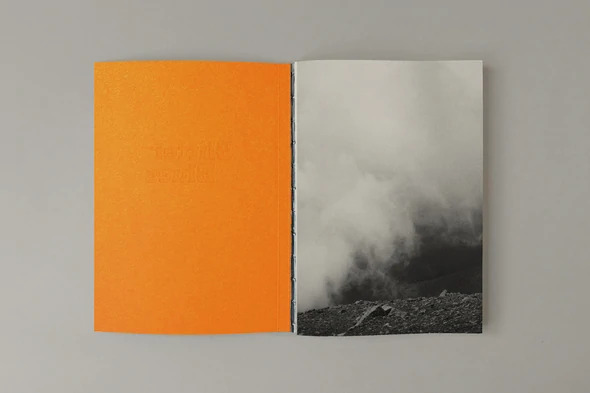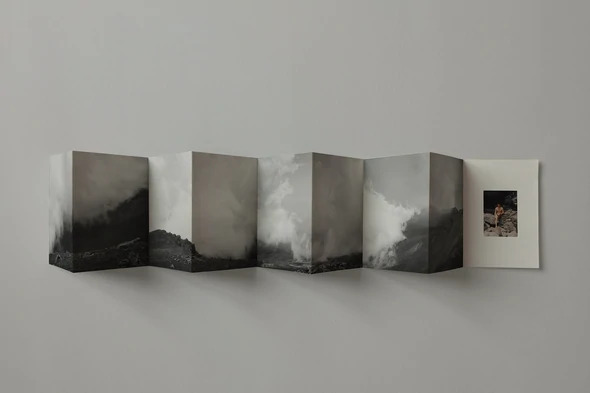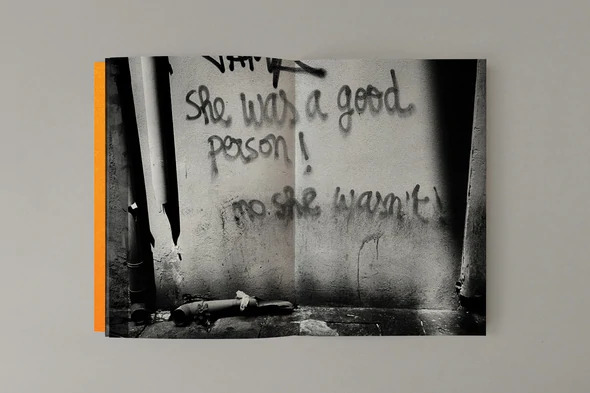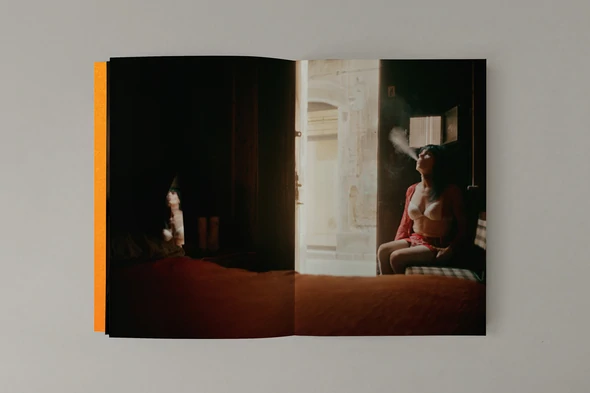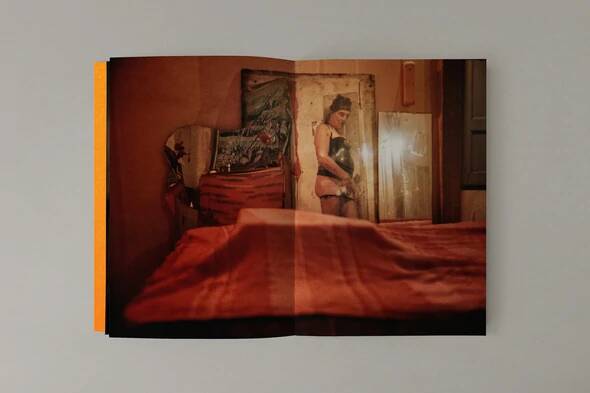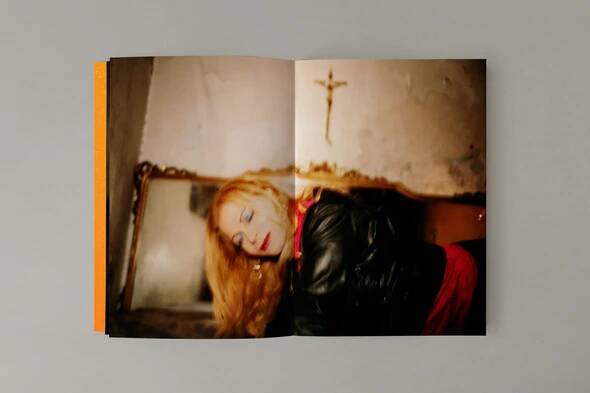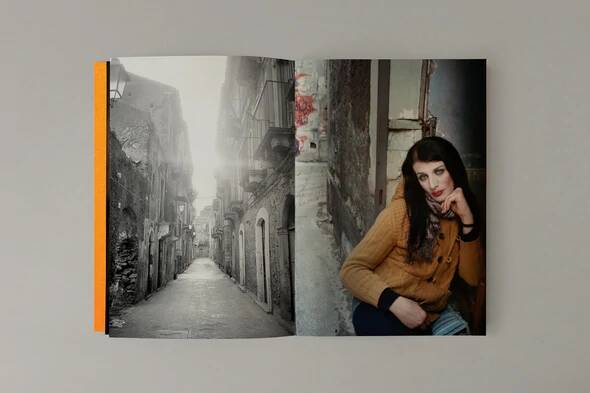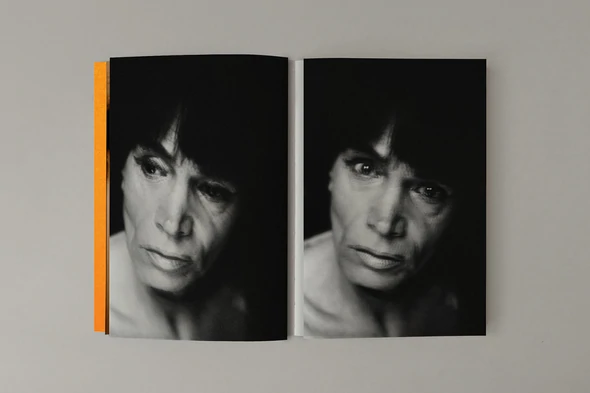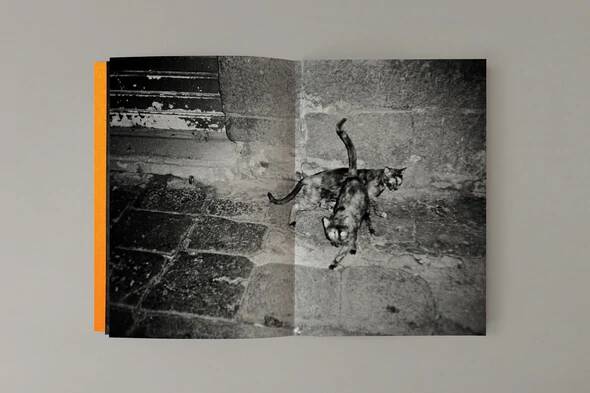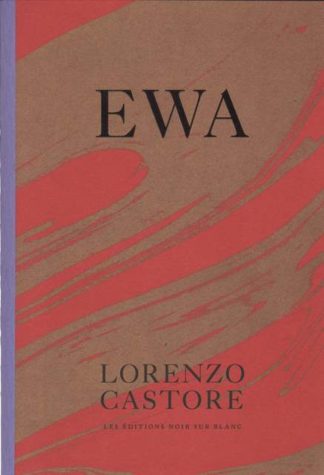1ère édition tirée à 800 exemplaires.
Découvrez le monde de Franchina, Cioccolatina, Lulù, Ramona, Brigida, Ornella, Monica the Viking, Fiorella, Rosa, Ambra et Graziella – des travestis siciliens qui vivent et travaillent dans le quartier de San Berillo à Catane, qui a toujours été le quartier rouge.
« Le quartier des filles était situé dans la ville de telle sorte qu’il ressemblait à un territoire séparé, comme une île sans la mer ni un château sans fortifications. Après être entré dans l’une des allées d’entrée autour du périmètre, on a l’impression d’être fermé, surveillé et protégé. C’est comme entrer dans un village privé qui ressemble presque à une maison en plein air. Dans ces quatre rues, l’intimité vit sur les seuils des chambres individuelles du rez-de-chaussée qui s’ouvrent sur la rue, et l’invitation à se laisser engloutir par tout cela est ce qui définit la nature même du lieu. » *
Ce qui a commencé par accident en 2004, est devenu une relation à long terme entre Lorenzo Castore et les filles. Chaque fois qu’il était à Catane, il leur rendait visite dans leur quartier et discutait avec eux entre les clients. « La relation était amicale, mais intermittente, superficielle et légère, comme c’était normal. Je me suis bien entendu avec eux, mais je n’avais pas l’intention de les photographier en pensant à un projet. »
Impressionné par l’ampleur et l’atmosphère du festival de Saint Agata, Castore a commencé à visiter Catane plus souvent : « L’esprit païen de cette forte exposition d’abandon au mystère, combiné à l’image de la jeune fille humiliée, torturée et amputée dans son expression physique la plus symbolique de la féminité, a créé en moi un puissant court-circuit qui m’a fait associer la vierge aux filles, à qui la nature n’avait pas accordé de seins mais des organes génitaux excessifs, ce qui avait causé, malgré elles, une identité personnelle conflictuelle et les avait trop souvent laissées comme des objets de discrimination sectaire. »
« Cette histoire n’est pas seulement poétique. C’est aussi une histoire de souffrance pour une identité rejetée. Souvent, c’est aussi une histoire de misère. Il y a la nécessité de se vendre comme la seule possibilité d’exister. Il y a l’impossibilité ou l’incapacité de créer autour de soi des relations stables et une vie normale au sens le plus simple du terme. Il existe un sentiment de culpabilité qui combat avec le désir de rédemption. Le contexte est une terre où la tradition catholique vit en contact étroit avec le criminel, et où la religion, la dévotion, le péché, la sexualité et la violence sont tissés ensemble par une force magique qui les synthétise tous. Mais c’est aussi un choix extrême de liberté et d’affirmation de leur propre être, avec tous les risques et les limites que cela comporte pour une société faussement ouverte comme la nôtre. Il y a aussi le fort sentiment d’appartenance à une communauté, avec toutes les tensions que cela implique de vivre dans une telle société en marge. Cependant les filles n’ont pas de propriétaires et pour beaucoup d’entre eux le sexe est ou était aussi plaisir, possibilité, voyage et aventure. Dans la vie, ils s’en sortaient mais ils le vivaient aussi et quand ils y arrivaient, ils en profitaient au plus profond. Ils vivent pour être acceptés pour ce qu’ils sont, pour avoir la liberté d’être eux-mêmes avec toutes les contradictions que cela apporte. Mon sens transparent de l’identité m’a fait me sentir chez moi autour d’eux. D’une certaine façon, leur lutte et leurs obsessions sont les miennes. Je suis dans ce livre autant qu’eux. Mon besoin de donner et de recevoir une chaleur désintéressée a été satisfait et réciproque par leur compagnie et par leur confiance mêlée de volubilité, et j’espère que ce livre peut donner quelque chose en retour, un témoignage rempli de vie réelle. »
* Toutes les citations proviennent de l’essai de Lorenzo Castore qui accompagne le livre.
Toutes les photos sont numériques.
1st edition on 800 copies.
Discover the world of Franchina, Cioccolatina, Lulù, Ramona, Brigida, Ornella, Monica the Viking, Fiorella, Rosa, Ambra and Graziella – Sicilian transvestites living/working in Catania’s neighbourhood San Berillo, that has always been the red-light district.
“The girls’ neighbourhood was set in the city in such a way that it seemed like a separate territory, like an island without the sea around it or a castle without fortifications. After entering one of the alleyways of entry around the perimeter it feels like you are closed in, watched over and shielded. It’s like entering a private village that almost resembles an open-air home. In those four streets intimacy lives on the thresholds of the ground-floor single-rooms that open onto the street, and the invitation to be swallowed by it all is what defines the very nature of the place.”*
What started by accident in 2004, has become a long-term relation between Lorenzo Castore and the girls. Each time he was in Catania, he visited them in their neighbourhood and chatted with them between the clients. “The relationship was friendly but intermittent, superficial and light, as was normal for it to be. I got on with them but I had no intention of photographing them with a project in mind.”
Impressed by the scale and atmosphere of the Saint Agata festival, Castore started to visit Catania more often: “The pagan spirit of this loud exhibition of abandon to the mysterious, combined with the image of the humiliated young girl, tortured and amputated in her most symbolic physical expression of femininity, created in me a powerful emotional short-circuit that made me associate the virgin to the girls, to whom nature had not granted breasts but excess genitals, which had caused, in spite of themselves, a conflicting personal identity and too often had left them as objects of bigoted discrimination.”
“This story is not only poetic. It’s also a story of suffering for a rejected identity. Often it is also a story of misery. There’s the need to sell oneself as the only possibility for existing. There’s the impossibility of, or the incapacity for, creating around yourself some steady relationships and a normal life in the simplest sense of the word. There exists a sense of guilt that fights with the desire for redemption. The context is a land where the catholic tradition lives in close contact with the criminal one, and where religion, devotion, sin, sexuality and violence are weaved together by a magical force that synthesises them all. But theirs is also an extreme choice of liberty and of affirmation of their own beings, with all the risks and the limits that this brings in a falsely open society like ours. There is also the strong sense of belonging to a community, with all the tensions that living in such a society on the margins implies. However the girls do not have owners and for many of them sex is or was also pleasure, possibility, travel and adventure. In life they got by but they also lived it and when they managed to, they enjoyed it to the core. They live to be accepted for who they are, to have the liberty to be themselves with all the contradictions that this brings. My transparent sense of identity made me feel at home around them. Somehow their struggle and their obsessions are mine. I am in this book as much as they are. My need to give and receive selfless warmth was satisfied and reciprocated by their company and by their trust mixed with volubility, and I hope that this book can give something back, a testimony filled with real life.”
* All quotes come from Lorenzo Castore’s essay accompanying the book.
All photos are mock-ups.
